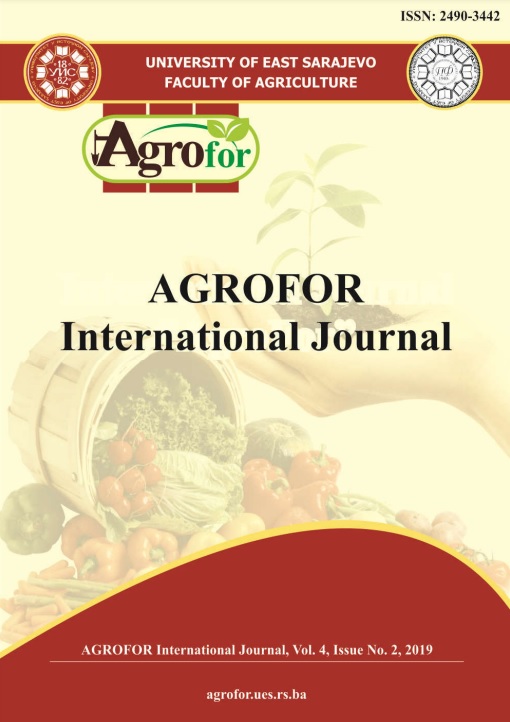SPATIO-TEMPORAL DYNAMIC OF LAND DEGRADATION USING REMOTE SENSING-BASED INDEX
DOI:
https://doi.org/10.7251/AGRENG1902101SAbstract
Land degradation is the major issue which affect watershed sustainability and following social, economic and environmental of livelihood people. So, early detection of land degradation is necessary for policy-makers to make appropriate decision. In this way, remote sensing method is a candidate choice for assessments and monitoring. In this study, land degradation was assessed using Rain-Use Efficiency (RUE) in the Shazand Watershed, Iran in 1986, 1998, 2008 and 2016. Thus, annual rainfall was calculated using inverse distance weight (IDW), net primary productivity (NPP) were calculated using Landsat images. The results indicated that RUE had increasing and then decreasing trends which were 10.66, 33.77, 20.03 and 9.47 kg C ha-1 yr-1. The results also illustrate that the mean value of RUE in different land uses varied between the irrigated land and orchard that had the highest value and outcrop dominant areas and bareland had the lowest value of RUE among land use categories. It is also established that spatio-temporal analysis of RUE can provide valuable information about the trend of watershed’s sustainability over years.

